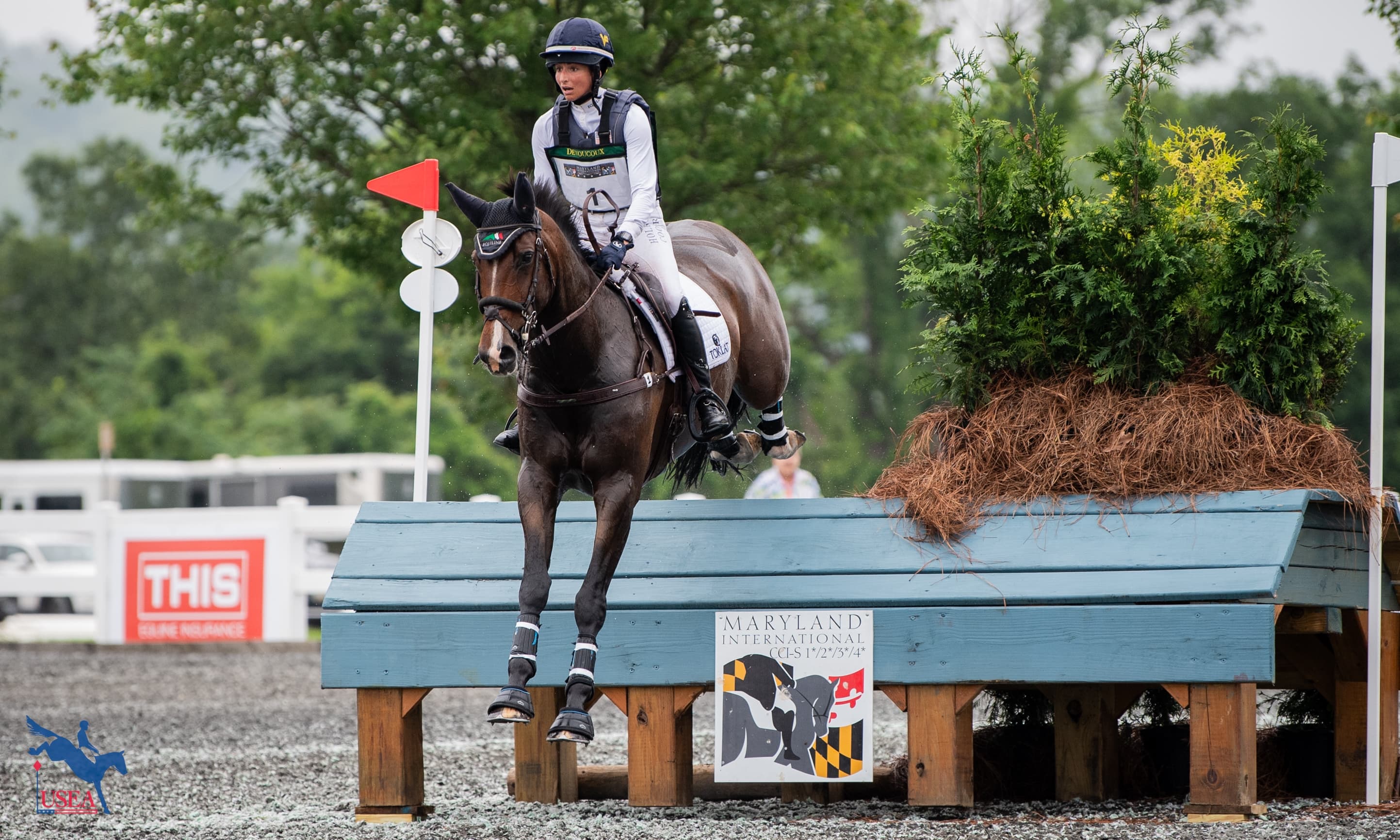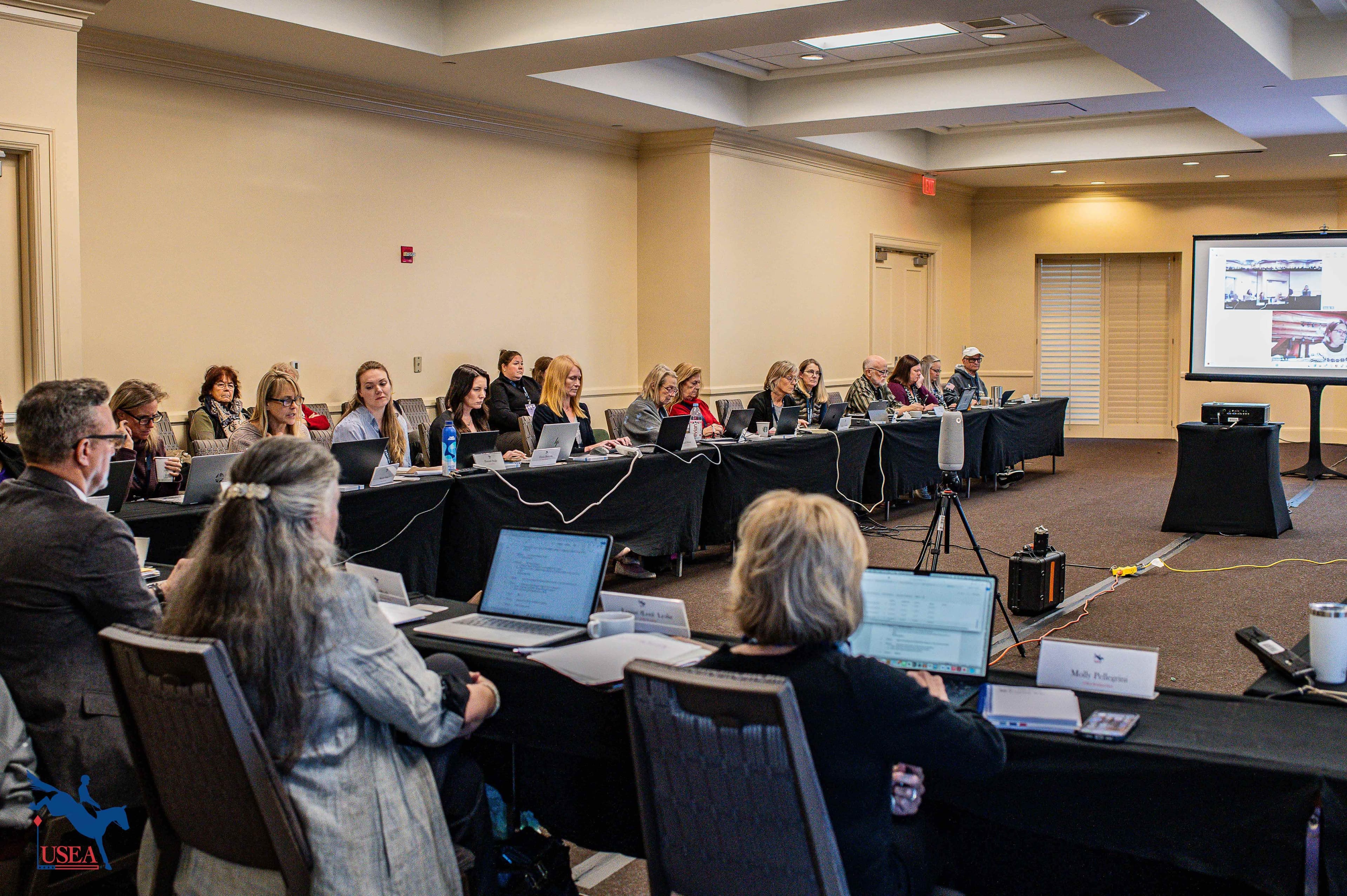Working Gaits and Collection for the Young Event Horse: Day One of the 2018 Educational Symposium
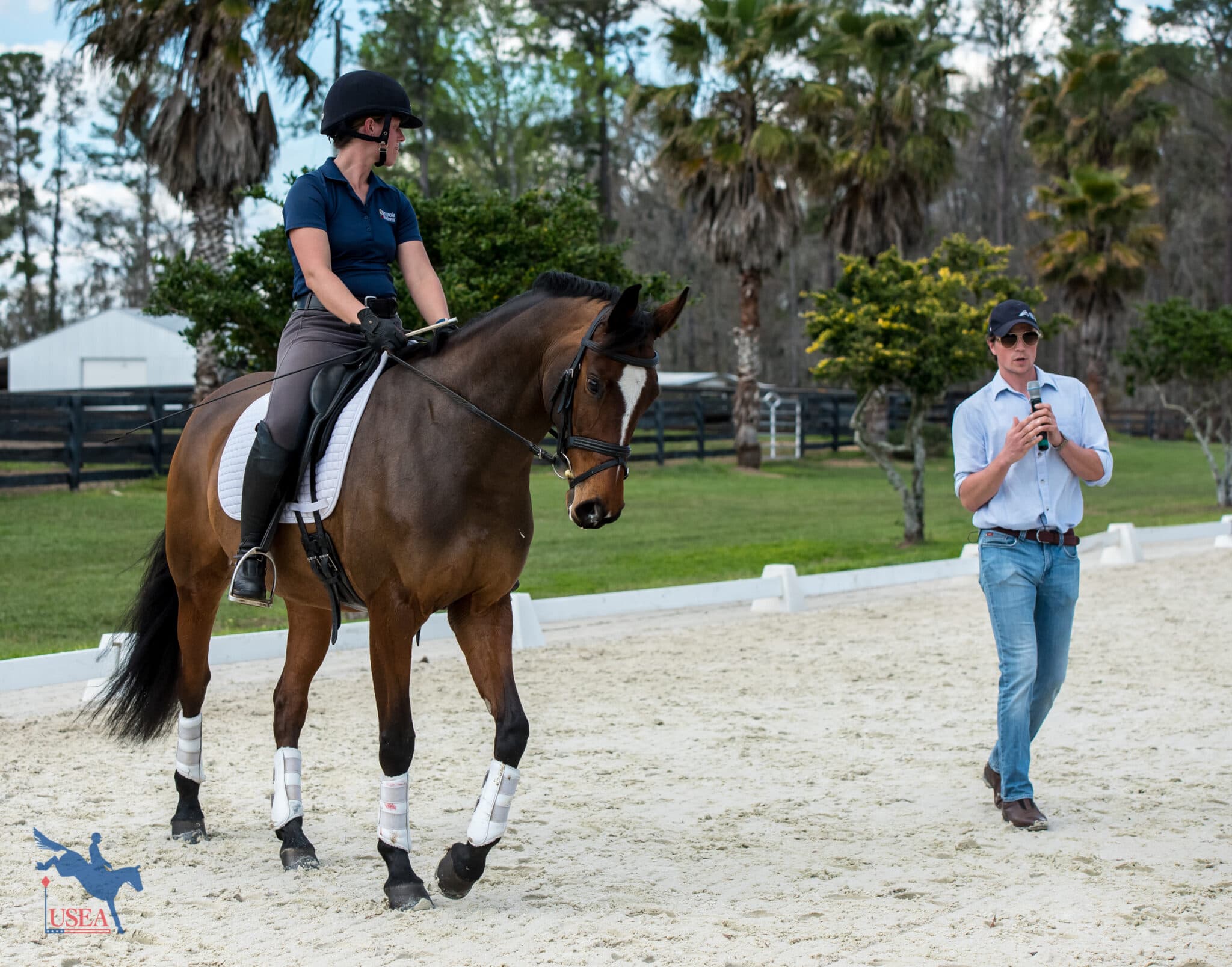
The 2018 USEA Educational Symposium kicked off today at the picturesque Longwood Farm South in Ocala, Florida. The Instructors’ Certification Program (ICP), Young Event Horse (YEH) Program, and the Future Event Horse (FEH) Program have teamed up again this year to offer four education-packed days that focus on the young event horse. Featured clinicians Leslie Law and Kai-Steffen Meier will conduct both days of the ICP symposium and will also ride demo horses for the Young Event Horse Symposium on Wednesday.
First up this week is the two-day ICP Symposium, which is centered on the riding and training of the young event horse in dressage and over fences. In 2017, the ICP debuted two new certifications: the YEH Instructor and YEH Professional Horse Trainer certifications. Today’s sessions were all about the training of the young event horse for dressage, while tomorrow’s sessions will concentrate on the jumping phases, giving attendees more in-depth knowledge about how to work with young horses.
Law led off this morning with a discussion about how to go about developing the working gaits in young horses. “To start, I think with any horse you always have to look at the horse as an individual, at both their physical and their mental strength,” Law began. “Every young horse is probably going to be a little bit different. Some are going to be physically stronger than others . . . and then mentally where are they at as a young horse? Keeping the gaits as natural as possible is the place to start.”

Law explained that in general, when we think about improving gaits, the first place we jump to is the dressage ring, but Law believes that young horses benefit from a lot of time spent working on the flat outside the arena. “Sometimes a four-year-old can find it very difficult to canter around a dressage ring, and a lot of the time that can be done out in the field.” Law said that one of the biggest problems we see with the canter in young horses is trying to collect it too early. “We need to find the horse’s natural canter and let him gain his strength in that canter . . . what we don’t want to do with a young horse is destroy what they have naturally.”
The morning session saw four horses, ages 4 to 6, and their riders each working with Law one-on-one. With each horse, Law first encouraged the riders to use the warm-up to establish the horse’s natural rhythm, neither pushing the horse too fast or riding the horse too slow. The first horse the group saw was quite quick at the trot, so Law encouraged his rider to slow him down to allow him to find his natural gait and not run past his balance. Law explained that he refers to this as the horse’s “3 mile-per-hour pace,” and that this pace must first be established before moving onto other paces within the working gait. Law also encouraged each rider to give their horses a slightly longer rein to encourage the horse to have a longer, rounder shape in their neck.
Once the horse had established his balance at the 3mph trot, the rider would then ask the horse for a bit more within the working gait, which Law called the “5 mile-per-hour pace.” “I use 3mph and 5mph because I think people understand that better than forward and backward,” he explained. Moving between the 3mph trot and the 5mph trot requires the horse to use his body and work from behind, which improves connection. Law worked through this exercise both with the horse going large around the arena and on a circle, at the trot and at the canter. “The transitions within the gait that you’re in are what gets the horse active in the hind end,” he stated. He also pointed out to the observing crowd that, with one of the slightly more experienced 6-year-olds, you could watch the horse’s shape change slightly as he moved between the 3mph pace and the 5mph pace, in part because of his more developed sense of balance. “He keeps the roundness to the neck, but you can see him coming up in front. He has a difference balance than the 4-year-old.”
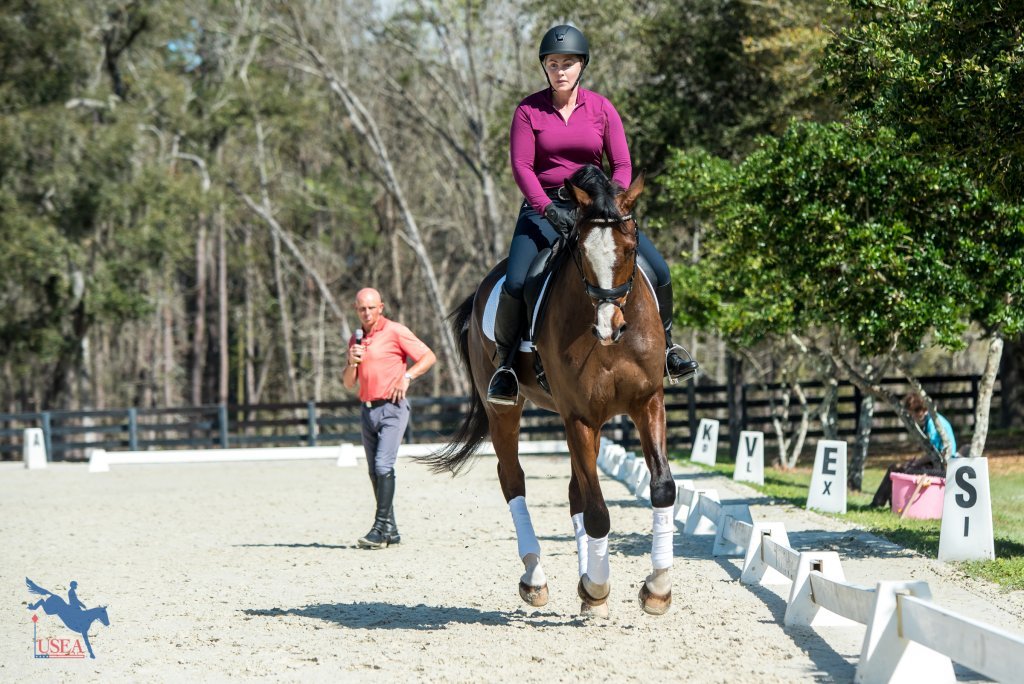
Law had the older, more experienced horses work on this same concept by spiraling down to a 10-meter circle and then spiraling back out, all while moving between the 3mph and 5mph pace. He described how the rider should envision slowing the horse’s front end while keeping the hind end active to create a better connection from back to front.
The final horse of the morning session displayed more stiffness while tracking to the left, which Law addressed by asking his rider to “put his nostril to the boards,” flexing just slightly away from the inside rein towards the rail to improve his straightness. Once the horse was straight, he was able to use his body much better and was able to move onto the 3mph to 5mph exercise. Law explained that it was important to address the issue of straightness before moving to work on the gaits because it plays such a crucial role in how the horse uses his body. “For me, this is the time to address these things. Get him rounder and longer in his neck so he’s actually working through himself before we start to go forward and back.”
Law emphasized the importance of breaks in the work, especially for young horses. “It’s very important for the young horse to take breaks. Sometimes they just work for 20 minutes because physically and mentally that’s about all they can take . . . There is frequently a small window to get work done before they get tired. You don’t have to achieve everything in one session.” He also pointed out that it’s the rider’s responsibility to know what your horse is ready for and capable of. “[Training the young horse is about] looking after what you’ve got and not spoiling what you might have naturally.”
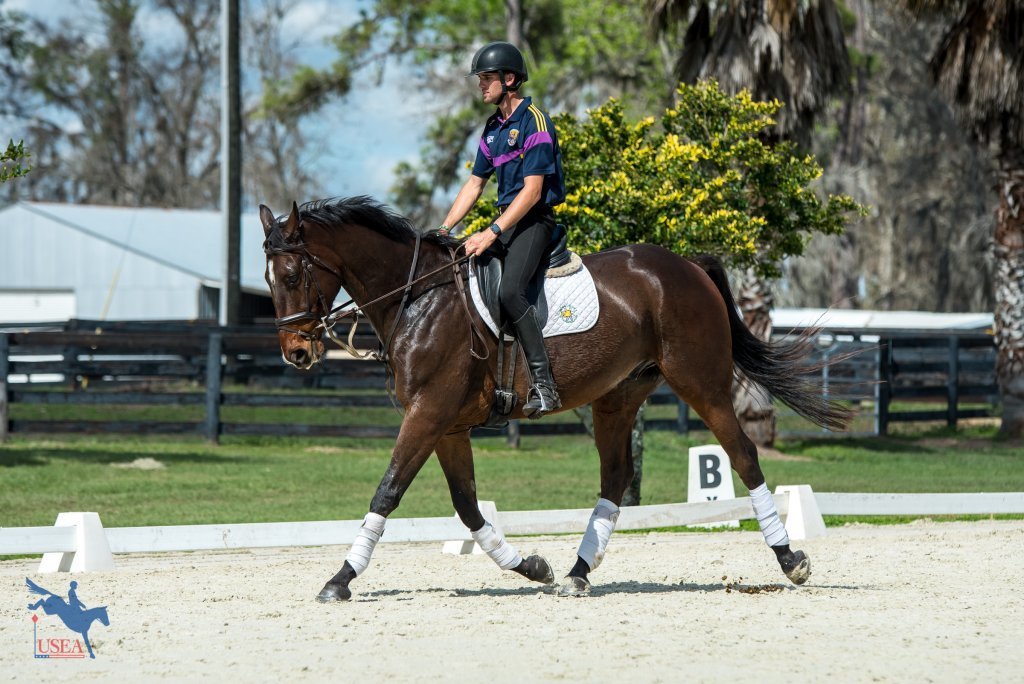
After the lunch break, Meier built on Law’s instruction from the morning, discussing how to go about developing collection as the young event horse progresses in skill and ability. He started out by explaining that collection isn’t something you work on one day and not the next. “It’s a thing you work on, often already without realizing what you’re doing . . . collection is not just about dressage collection, it’s about educating the young horse.”
Meier’s first order of business with each of his three groups was to make sure the horses were well in front of the leg. “It’s a thing to know your horse and how he warms up in the best way,” he said. He encouraged riders to use transitions, both between and within gaits, to make sure the horses were responsive to the leg aids, and emphasized that what the horse was doing with his neck wasn’t so important. “If you use your legs to get the hind legs moving, the neck will come up. Ride with your leg.”
Once the horses were moving forward and well off the leg, Meier started to work lateral movement exercises into the session. “Leg yielding is basically the first thing where collection comes into the game,” he stated. Meier had riders work on a circle around him, moving the hind end to slightly to the inside and then to the outside, to keep the hind legs active, explaining that it’s easier for the horse to keep their hind leg activated on a circle. He also had riders do a slight shoulder-in on the circle to encourage their horses to stay up on their own through the transitions.

Meier said that, in his training, he prefers using the term “slow down” to “collection” because the term collection makes riders tense. “They picture what they know from the Grand Prix in dressage and so it makes them nervous.” So, Meier would tell the riders to slow down a little bit, but keep the horse moving with their leg. “Slow down, step by step, but keep your connection . . . You need to keep the hind legs active, and if you have that you will get the result that the neck comes up.” Meier worked with each horse and rider combination on slowing down, keeping the hind legs active, and then sending the horse forward again.
Meier had the last group of the day work on additional exercises to strengthen their horses’ connection from their hind ends. “Transitions within the lateral work put even more pressure on the hind legs,” he explained as he asked Lauren Kieffer to perform a shoulder-in down the long side of the arena while moving between a smaller trot and larger trot. “The bend increases the pressure on the inside hind leg.” He had Caroline Martin perform transitions between the trot and the canter on a circle, stating that, “The thing about trot-to-canter transitions and vice versa is that when the horse is in canter the back muscles move in the same direction and in the trot they move in the opposite direction. These transitions train the back muscles and make them stronger.” He ended the session by having both riders canter on a straight line down the quarter line of the arena. “The more you collect a horse on the straight line the more you have to balance. When you ask for straightness and collection it’s very hard for a young horse but it’s a very good exercise for them.”
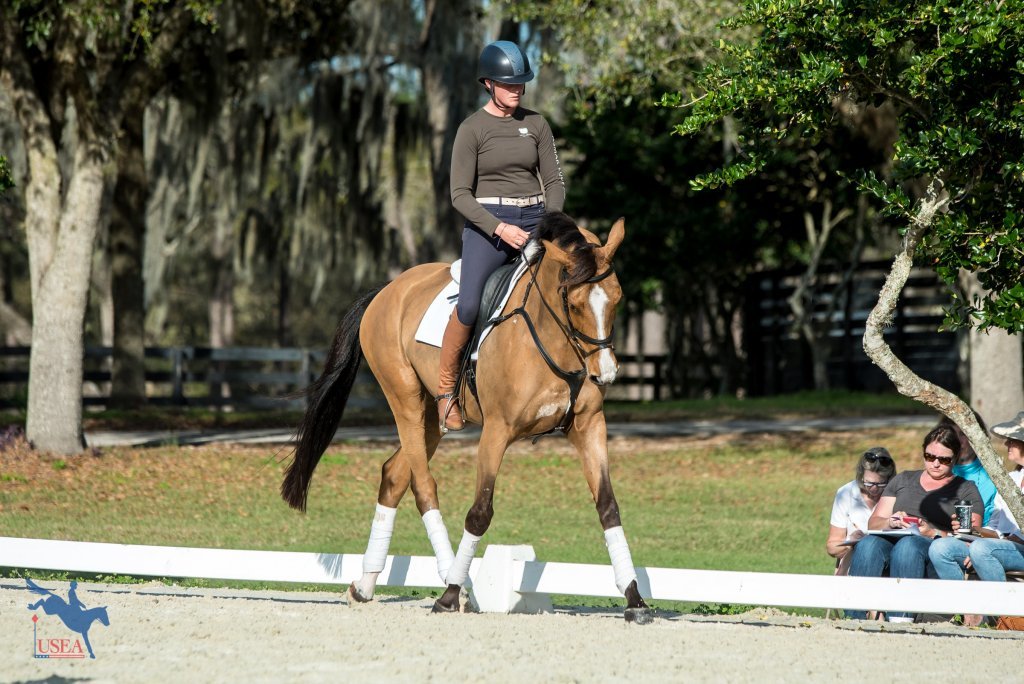
Something both clinicians commented on is the importance of schooling a young horse through a spook. Law explained that he will, for example, bring a young spooking horse back down from the trot to the walk to pass a scary object and then resume working as before. “Turn it into an exercise . . . If I go through that process, the horse is going to gain confidence in me. To me, producing horses, that’s a big factor, encouraging the horses to be confident.” Meier made a similar suggestion, saying, “When your horse is spooking, give him something to do . . . you want to make him concentrate on you.”
Both clinicians also compared the exercises they demonstrated to what humans do in the gym. “It’s similar to when we go in the gym, it’s working the muscles,” said Meier. “It should not mean that when you’re in a dressage test that you suddenly start to ride them [differently]. The dressage test is about presentation, this is about training.”
Tomorrow, Law and Meier will move out of the dressage court and out into the field to cover the development of the young horse’s jumping canter as well as horse and rider jumping knowledge and skill, both for show jumping and cross-country.
The USEA would like to thank EquiAppraisal, LLC for sponsoring this year’s Educational Symposium.
The USEA would also like to thank ICP, YEH, and FEH Sponsors who make these programs possible: Standlee Hay Company, Merck Animal Health, SmartPak, and Professional’s Choice.
About the USEA Instructors’ Certification Program
Instructors are essential to the training of riders and horses for safe and educated participation in the sport of eventing. The USEA Instructors’ Certification Program (ICP) was initiated in 2002 to educate all levels of eventing instructor with essential training principles upon which those instructors can continue to build throughout their teaching careers. ICP offers educational Workshops and Assessments by which both regular instructors, Level I through Level IV, Young Event Horse (YEH) instructors, and Young Event Horse professional horse trainers can become ICP certified. Additional Information about ICP’s goals, benefits, Workshops, and Assessments is available on the USEA website. Names and contact information for current ICP-certified instructors, YEH instructors, and YEH professional horse trainers are available on the USEA website as well, listed by ICP certificate level and type and by USEA Area.












